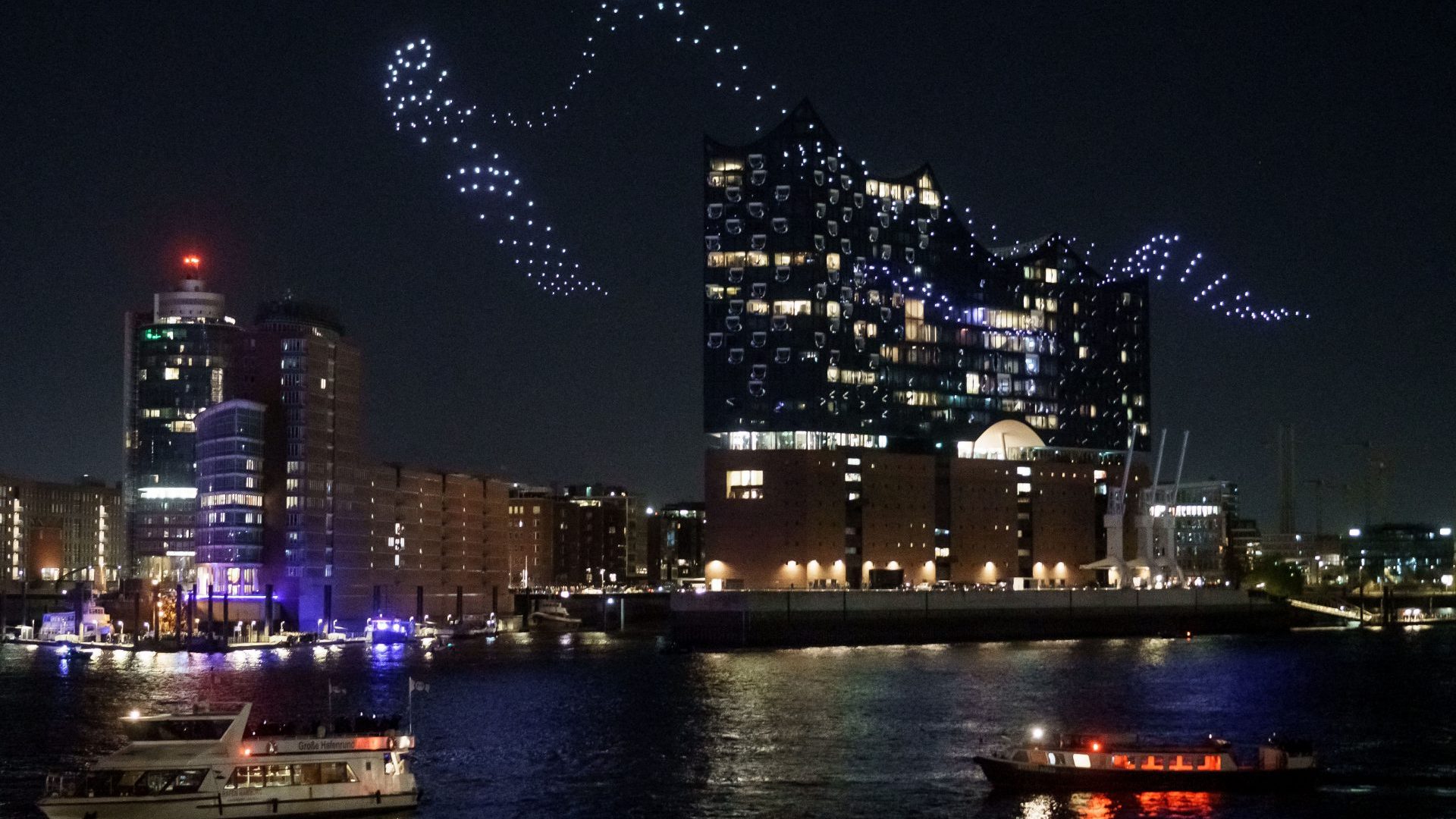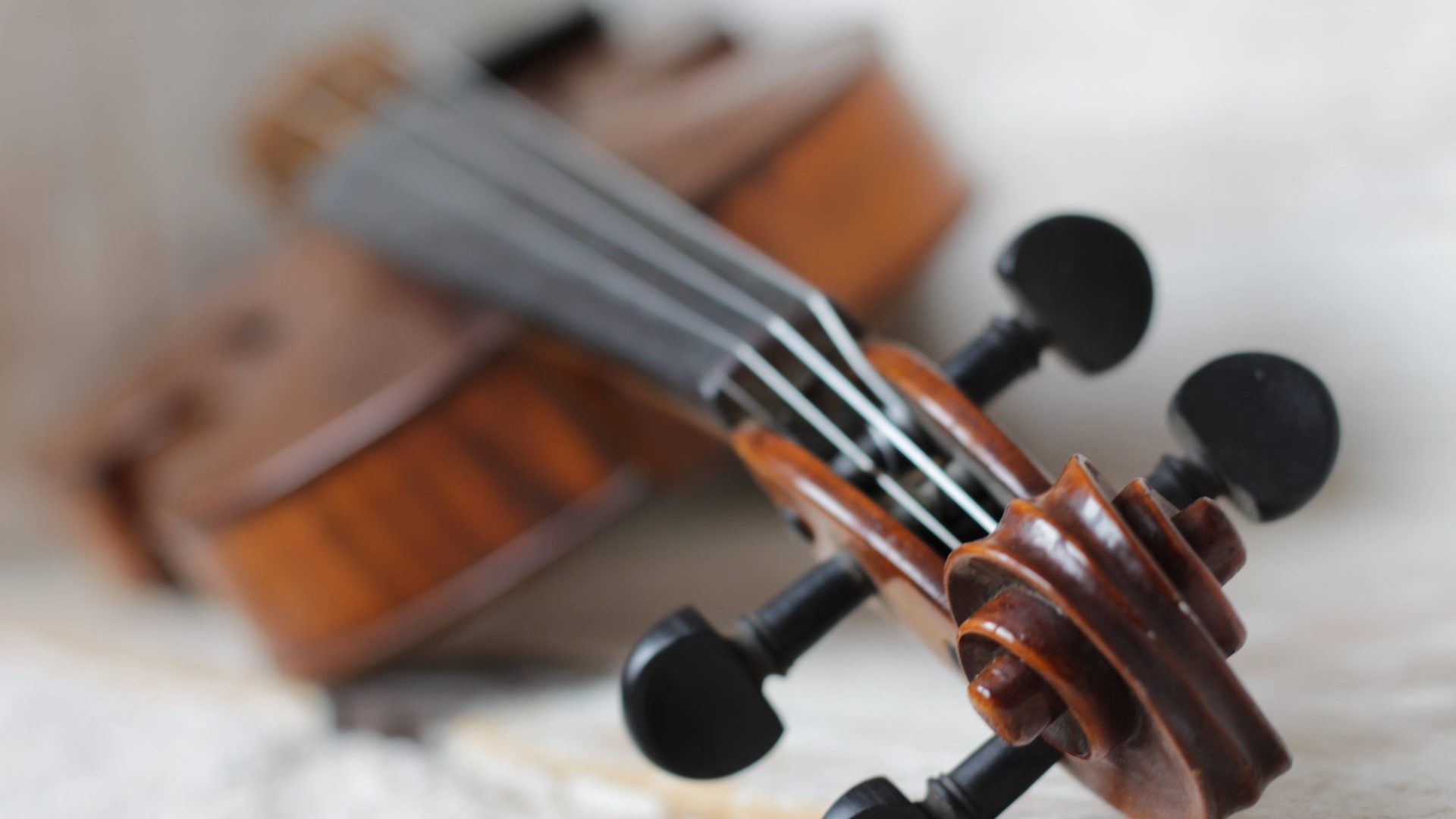First there was Covid, then there was an aggressive drone attack: it’s fair to
say that the celebrations marking the fifth anniversary of Hamburg’s state-of-the-art concert hall have not gone entirely to plan. But that’s rather in
the spirit of the Elbphilharmonie – or Elphi as it gets called – a grand project
that has charmed and frustrated onlookers since the architects put pen to paper 20 years ago.
Now, five years after its inaugural concert on January 11 2017, it rests secure in the affections of a city famous for musicians from Mahler and Mendelssohn to the Beatles.
A few hours before a choreographed light display entitled Breaking Waves made its debut in the skies around the Elbphilharmonie, Lonneke Gordijn of
Dutch artist duo Drift paid tribute to the ambition and innovation embodied by the concert hall. “That’s something that Elbphilharmonie has in common with our approach at Drift. We love to do projects that have never been done before, and that are quite challenging.”
Performed by a fleet of drones, to the accompaniment of the slow movement of Thomas Adès’s Piano Concerto, Breaking Waves formed an eery, slow-moving aura around the Elbphilharmonie, which, surrounded by water and topped by a glass roof that evokes sails as much as a cresting wave, could not have looked more like a great ocean-going ship.
The seven-minute light show followed a performance of Haydn’s The Creation by the resident NDR Elbphilharmonie Orchester, joined by NDR
Vokalensemble, WDR Rundfunkchor, and soloists Christina Landshamer,
Benjamin Hulett and Benjamin Appl, conducted by Alan Gilbert.
Buoyed by music and refreshments, the several boatloads of journalists and VIPs remained largely oblivious to the odd falling drone, and few recognised
the green lights of predator drones for what they were. It was only the following day that the extent of the sabotage emerged, with the announcement that the performances scheduled for the following three nights would be cancelled. A joint statement by Drift and the Elbphilharmonie explained that “the art action was massively disturbed by foreign high-speed drones. Numerous drones crashed. This requires a reassessment of the security situation for the protection of spectators and staff.”
Though hugely disappointing for all those involved, the drama was in keeping with a building that in human form would be a particularly
troublesome if much-loved diva. Its final costs totalled an enormous €866m (£739m), and by 2011, the Elbphilharmonie was already a byword for vast expense, with the then culture senator, the late Barbara Kisseler, quipping that “the Elbphilharmonie is very dear to us. In both senses of the word.”
As the building turns five, such details seem to have been subsumed into Elphi’s mythology, and the general and artistic director, Christoph Lieben-Seutter, said “the Elbphilharmonie has more than fulfilled the high expectations that were placed on it.” Astonishingly, since 2017 around 3.3 million people have attended concerts, tripling the number of Hamburg’s concertgoers in that time.
There is broad agreement that far from the white elephant that was feared, it has brought benefits to the city way beyond an enhanced concert hall. Since its opening, the number of visitors to Hamburg from Germany and beyond has increased, with visits typically including trips to the city’s other cultural sites, such as the Kunsthalle, the museums, the opera and the theatre.
Even for those not attending a concert, the Elbphilharmonie is an attractive place to visit, and more than 14.5 million people have accessed the Plaza, from where you can survey the entire city. The Elbphilharmonie is in the heart of the HafenCity, billed as Europe’s largest inner-city urban development project, modern and outward-looking while still honouring the city’s history. As a member of the medieval trading confederacy the Hanseatic League, Hamburg was an independent state until 1871. Today it
remains the third-largest port in Europe after Rotterdam and Antwerp.
Designed by Swiss architects Herzog & de Meuron, the 110-metre high Elbphilharmonie comprises two concert halls, the Westin Hamburg Hotel, bars and restaurants, and 45 private apartments. The Plaza is reached via an 82-metre long curved escalator to the 8th floor, from where concert-goers can make their way to their seats via one of several bars, each named after a major donor.
The Grand Hall claims one of the world’s most superior acoustic experiences; above all, the hall, which is suspended inside a cocoon, promises a consistent sound across all 2,100 seats. This is partly down to its
“vineyard model” design, chosen over the more traditional shoebox alternative, to make it “a hall without hierarchy”. Performers are completely surrounded by the audience, fostering a close sense of connection.
According to Yasuhisa Toyota, who was tasked with designing the Elbphilharmonie’s acoustics, there is no best seat in the house, “but there
are an awful lot of very good ones”. This is due in part to its plaster and
pressed paper skin, covered all over with irregular moulded indentations,
shallow in some places and full thickness in others. These are apparently key to the behaviour of sound in the space, which is characterised as dry, with little echo or distortion.
Like London’s Tate Modern, another Herzog & de Meuron building, the Elbphilharmonie combines an existing industrial building, in this case a 1960s warehouse once used to store cocoa and coffee, with a futuristic, glass
structure, specially treated to maintain a regular temperature inside, but to catch the light to stunning and varied effect on its exterior.
Hamburg was strategically vital in the second world war, and was bombed heavily as a consequence. Still, the five church spires that famously dominate its skyline remain, along with some of the city’s most unique and characterful buildings, found in the Speicherstadt and Kontorhaus districts of the city.
The districts, both designated in 2015 as Unesco World Heritage sites, are near to one another, the former dominated by warehouses built between 1885 and 1927, the latter a district of office buildings dating from 1920-50, and still largely functioning in their original purpose. Built after a cholera epidemic in 1912, the districts brought a concerted campaign of modernisation in which living, working and storage facilities were separated out for the first time in the city’s history.
The Kontorhaus includes six office complexes, including the extraordinary Chilehaus, its sharp, sweeping lines typical of 1920s brick expressionism, and, like the Elbphilharmonie, highly suggestive of a ship’s architecture. Maritime motifs, including a sailing ship, a ship’s wheel and a seagull, appear on the exterior of the nearby Sprinkenhof complex, designed to give each worker access to their own window.
Largely the work of three architects, Fritz Höger, and the brothers Oskar
and Hans Gerson, the Kontorhaus offers a window on 1930s Germany and the ways in which particular episodes and individual stories can remain unresolved today. Höger was a Nazi sympathiser, though his style did not find favour with Hitler, who preferred the overblown neoclassicism of Albert Speer. The Gerson brothers were Jews, and were banned from practising as architects from 1933, while the Ballinhaus, one of the Gersons’ office buildings, was renamed the Messberghof at the point when Jewish names were being stripped from street names and buildings.
The distinctive brickwork of the Kontorhaus recurs in HafenCity, whose aims for better, more efficient ways to live and work are no less revolutionary than those of a century ago. Today, the priority is to limit car
travel and to facilitate eco-friendly living that maximises work-life balance, and the result is a return to the combined living, working, and warehousing areas that existed in Hamburg prior to the 20th century.
As a waterfront development, HafenCity aims to improve on precedents such as the Docklands in London, and to the visitor’s eye, it seems successful. On a Saturday morning, the area around the Elbe is busy with families, in keeping with its aims to be socially and economically inclusive, as well as ecologically sustainable. In this sense, the Elbphilharmonie looks like a gesture of genuine intent: as funding for culture and heritage is cut still further in the UK, Hamburg’s pride and joy shows how a monument to the best of high culture can be the very opposite of elitist. Just watch out for rogue drones.
Florence Hallett is a freelance art writer and critic, and has written for The Independent, The Daily Telegraph and The Art Newspaper, among others




